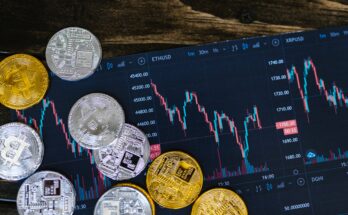Kenya’s GDP Growth Slows but Expansion of Investment Opportunities Continues
Kenya, One of the most important countries in East Africa, is experiencing a year of economic divergence, as several recent developments are showing a different trend compared to the previous years. Now, statistics show a figure of 4.6% in GDP growth rate recorded in the second quarter of 2025 as opposed to 5.6% reported during the same period last year. Though this one dip points at several challenges that are characterizing the economy, it also reinforces the structural changes that are providing opportunities for investment in key sectors.
Economic Factors Responsible for the Slowdown
1. Shrinkage of Industries
Kenya’s GDP slowdown can be traced to shrinkage in a number of crucial industries. Some of them include:
- Agriculture which accounts for more than 20% of the county’s GDP, was affected by the devastating floods witnessed earlier in the year. The rains which took place in April and May and are important for the growth of crops left much of the arable lands destroyed and led to reduced output.
- Further, the construction and mining sectors did not do well, suffering a decrease of 2.7% and 2.4% respectively. Such sectors encountered scarcity of both investment and resources and encountered problems with levels of investment.
- Global disruption of supplies and Monetary Polices
Indeed over the course of inflation in the mid-year reached an alarming level of 9.2%, Kenya’s Central Bank made heads of controlling inflation by tightening monetary policy. Lack of credit availability, especially to
The Bright Spots: Emerging Investment Opportunities Known Too Well – Analysts Strategically Seek Inflated Returns to Cover up Previous Losses
Notwithstanding these challenges, the economic scenario in Kenya is on a transformation, and few sectors are gaining traction to attract local and foreign investors. Perspectives include:
- Infrastructure Development
Kenya still has no plans to abandon its Vision 2030 development blueprint. Continuity in the construction of infrastructure such as the Nairobi Expressway and the ongoing expansion of transport corridors will promote growth and enhance interlinkage.
- Accessibility to funds for the construction of infrastructure projects has been eased by the lower interest rate that followed the Central Bank’s cut of the Central Bank Rate (CBR) from 13.00% to 12.00%.
- PPPs are being promoted. There are therefore chances for foreign direct investment (FDI).
- Agricultural Modernization
Kenya being a relatively agricultural based economy, there are initiatives to modern agriculture. Irrigation, mechanisation, and value addition in agro processing are some of the upcoming government programs to be introduced.
- There is increase in investments in agritech solutions such as precision farming and climate-smart crops.
- There are opportunities in the export-driven agricultural products such as coffee, tea and horticulture as global demand on organic and sustainable products increases.
- Scope for Manufacturing and Export Expansion
The manufacturing sector in Kenya’s economy may account for only seven percent of Kenya’s GDP, but it can only get better. With more tax incentives and special economic extracts being offered, more investments into value adding manufacturing can be expected in the future.
There are key opportunities in agro processing, textiles and the assembly of electronics and vehicles for the domestic and regional markets.
Policy Shifts Supporting Growth
At the recent conference, the Speaker of Kenya’s parliament assured Kenyans that their parliament understands its role towards the recovery of the economy and the boosting of investors’ confidence.
1 Monetary Policy Easing
There has been a change in the Central Bank of Kenya (CBK) monetary policy and thus investors have regarded it as more accommodative with a drop in the interest rates and a lean towards liquidity in the economy. The anticipation follows that this will increase private sector credit and revive economic activity.
2Tax Reforms and Fiscal Prudence
The government has had proposals targeting tax reforms despite the fact that these measures were initially met with criticism. Such measures are necessary for increasing the tax base and managing public expenditure. The reforms are important in narrowing the fiscal gap and improving debt sustainability.
3. Reforms in the Financial Markets
Having implemented reforms to its domestic monetary policy framework through the provision of an interbank interest rate corridor and a more market driven foreign exchange management system, the CBK embarked on a restructure of its financial system. Through these reforms, currency stability has been achieved and improved


